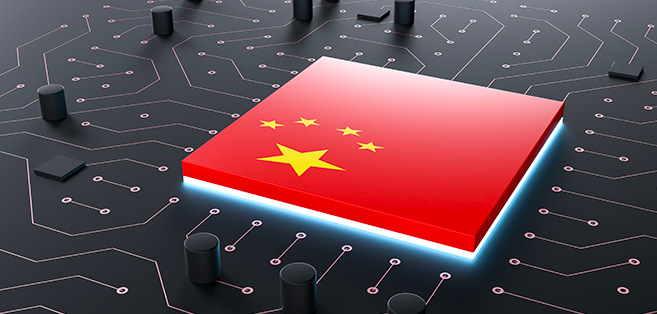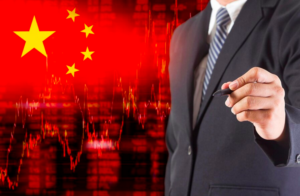“A battle is won by the side that is determined to win”, says Andrey Bolkonsky in Tolstoy’s famous novel War and Peace. Over a century later, this maxim is still relevant – if not on an actual battlefield but in numerous court hearings and public accusations taking place in the midst of the technological race between the US and China. And both sides seem to be quite determined to win this battle with the use of Intellectual Property (IP) law as their main weapon.
IP protection, including trademarks, copyrights and, most importantly when it comes to technology, patents, has turned into the key point in the current tech war rhetoric, which addresses IP issues both on macro and micro levels. IP theft (including confidential business information), forced technology transfer, discriminatory licensing restrictions and cyber hacking for commercial gain are violations of the rules of both domestic and international trade and are the main reasons for the US to take action and impose tariffs on China.
In this article, we will go through the conflict over IP theft that is fueling the tension between the US and China, what has been done to tackle it and what lesson can be learned from the tech war unfolding between the two world leading economies.
“Modern wars are fought with semiconductors” (Sen. Ben Sasse)
I partially agree here with US Senator Ben Sasse, who narrowed down the ongoing tech war to the fight for semiconductors and stated that “modern wars are fought with semiconductors”. In saying so, Sen. Sasse addresses the IP battle between the US and China in the semiconductors industry field. Acting as the basic component of modern digital life, these small chips needed for everything from AI to smartphones have now turned into valuable assets on the IP battlefield.
Certainly, Sen. Sasse did not emphasize the powers of semiconductors as much on their missile range measurements but rather on the value of the whole technology needed to produce one small chip. Semiconductor production is an entire environment onto itself that includes design, software and high-end manufacturing equipment. Thus, the golden apple of discord here is the American technology and software being used by Chinese manufacturers to produce those precious semiconductors, as US technology contributes to increasing the revenue of Chinese semiconductor companies.
If contract breaching or trademark/patent infringement is quite easy to detect and penalize, other alternative ways of obtaining technology secrets can be harder to track. These practices include hiring employees that have previously worked at competitor company while offering them a higher salary in return for trade secrets, acquiring US semiconductor companies and/or directly investing into the research companies abroad, with many of those investments coming from China state owned companies.
These constant intellectual property leaks led to the US government blocking the sale of semiconductor products to Chinese telecom equipment giant Huawei, a special license to sell semiconductors made with US software and technology to Huawei being now required. The imposed ban automatically stopped Huawei from accessing semiconductors manufactured by TSMC (Taiwan Semiconductor Manufacturing Company) and, at the same time, pulled Taiwan even more into US orbit. Later on, US trade authorities imposed export restrictions on China’s largest chip maker SMIC (Semiconductor Manufacturing International Corporation), invoking the “unacceptable risk” of seeing the equipment supplied being used for military purposes. Companies supplying SMIC with certain equipment will now have to apply for individual export licenses as well.
Interestingly, these restrictions not only had a direct influence on TSMC and Chinese companies but also highlighted the importance of other semiconductor producers like, for example, Israel. As China seeks to address this US-dependance vulnerability by becoming more self-sufficient regarding chip design and technology, Israeli fabless companies, design centers and fabs, well-known for high-level design and avant-garde R&D, are seeing new growth opportunities. Could Israel’s semiconductor industry become another political battlefield for China and the US? In May 2020, US Secretary of State Mike Pompeo told Israeli media that America “does not want the Chinese Communist Party to have access to Israeli infrastructure, Israeli communication systems, all of the things that put Israeli citizens at risk”. Enough said.
Despite the tensions that led to an all-out trade war over semiconductors, both sides had previously managed to sign the Phase One agreement that was actually supposed to improve the situation and never let small IP disputes grow into a large-scale international trade conflict. According to the agreement signed between the parties on the 15th of January, 2020, China was obliged to carry out effective actions and tackle IP issues. The White House said in a statement that the document is backed by “a robust dispute resolution system that ensures timely and effective enforcement of the terms of the agreement“. The agreement obliges China to remove barriers to American financial services, end currency manipulation, make additional purchases in the US energy sector, service and agricultural sector, but… it is not all about soybeans. The document, most importantly, covers such areas as regulating pharmaceutical patents, ending forced technology transfers, combating the sale of counterfeit products and some other issues all related to the protection of intellectual property.
If implemented efficiently and timely, the highly anticipated agreement could avert a protracted trade war and allow foreign companies to keep doing business in China without fear of retribution, while the authorities will be working hard to “ensure fair, adequate, and effective protection and enforcement of intellectual property rights”, as provided for in Chapter One of the agreement. Nevertheless, let us not forget that TSMC and SMIC restrictions happened after the agreement was signed, hands shaken and photos taken, meaning that it will take a while to reach that transparent, efficient and trustworthy IP architecture we all long for. Before that bright future comes, foreign businesses had better take action and have a relevant China-law-centered strategy when protecting their IP assets.
“The greatest victory is that which requires no battle” (Sun Tzu)
The whole drama of the tech war might make entrepreneurs feel either too optimistic and over-reliant on the political resolution of the IP issues, or discouraged to do anything on the Chinese market. The key to success here lies in finding the balance and keeping pedaling non-stop in order not to fall right or left. Do the necessary research and preparation before you introduce your product to the market and before you expose your IP assets to your business partners, check if you are actually following the relevant legal requirements when operating on the market, take care of the IP assets if your business leaves China at some point.
If firewalling your manufacturing sites and lining printer paper with metallic strips that activate alarm at the exits when an employee tries to leave with notes in their pocket seems like a bit of a stretch for you, then use more plain vanilla mechanisms to protect your trademark, patent and/or trade secrets. Start with filing your trademark and its equivalent in Chinese in all the classes you want your trademark to be protected. The same goes for patents, if they are applicable to your product. Sign and constantly update the NNN (non-disclosure, non-circumvention, non-use) agreements with your counterparts, work on confidentiality clauses and do not stop monitoring the market to keep an eye on possible infringements. Competition on the Chinese market has intensified to the point where foreign companies are infringing IP law to eliminate competition from the market too.
Nevertheless, there is a variety of measures to be taken in order to stop this from happening – starting with the restrictions imposed by the Chinese public authorities and IP issues regulating system implemented by Alibaba. Despite all the accusations, China does have an efficient system to protect your intellectual property if you have it registered in China. As reported by Bian Renjun in her research paper at Berkeley School of Law and as I see from my own litigation experience, foreign plaintiffs win more frequently than Chinese plaintiffs and they also get higher damages than the locals do. Intellectual property litigation in China is not expensive, time-sensitive and the courts are devoted exclusively to intellectual property which makes the judge expertise more reliable, so it is way more efficient to seek the answer there than wait for the US-China Phase Two agreement to happen.
Certainly, “the greatest victory is that which requires no battle”… but if you do go to war, remember it is “won by the side that is determined to win”.
Picture credits: orfonline.org






Be First to Comment